Do yellow jackets, like honey bees, make honey? This question has puzzled many and may have crossed your mind, too.
In this blog post, we unravel the answer to this question and more.
Let’s take a closer look at yellow jackets and their roles in the ecosystem.
What Are Yellow Jackets?
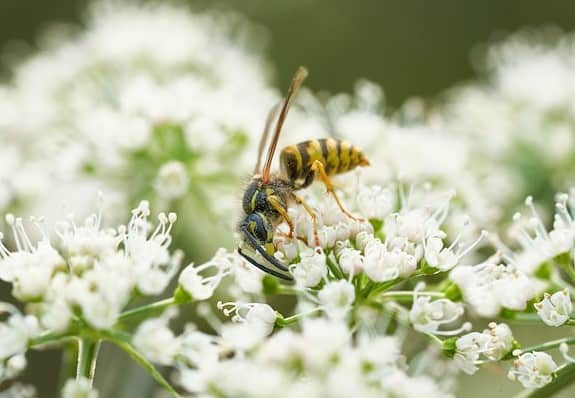
Yellowjackets are a type of wasp that belongs to the Vespidae family of insects.
Commonly known as wasps, they are social wasps belonging to the genera Vespula and Dolichovespula.
The term yellowjacket is more commonly used in North America.
Appearance
Most yellowjackets exhibit a black and yellow color combination, hence the name. Yellow jackets are often confused with honey bees due to their similar appearance. However, there are several key differences between the two.
While honey bees have fuzzy bodies, yellow jackets have smooth bodies, giving them a sleek and shiny appearance. Additionally, yellow jackets have long and slender bodies compared with a more striking and vibrant color pattern.
In terms of size, a female honey bee is smaller than a female yellowjacket. However, a queen and male honey bee are bigger than a male yellowjacket.
On average, yellow jackets would have a body length ranging from 1.2 to 2.0 centimeters long.
Nesting Habits
Yellowjackets live in large colonies, with each colony containing thousands of individuals.
These social insects have not shown a preference for the locations of their nests.
They can adapt to living in nests in tree cavities, walls, burrows, and underground. These wasps prefer concealed areas to build their nests for some added protection.
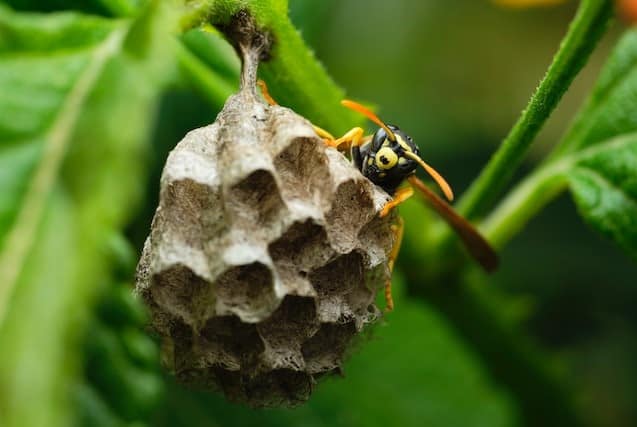
These insects build nests made of paper-like material by chewing wood into a pulp and mixing it with their saliva. They then arrange layers of hexagonal cells to lay their eggs and raise their larvae.
As the colony grows, they add more cells to accommodate the growing population.
Colony
In a yellowjacket colony, there is a queen, workers, and drones. Every one of them has specific roles that would support the colony’s survival.
The queen yellowjacket’s main responsibility is to build a nest, lay eggs, and rear her offspring.
Worker yellowjackets are responsible for foraging for food, defending the colony, and caring for the queen and her offspring.
Drone yellowjackets live just long enough to mate with a receptive queen. Once a queen is available, the drone will mate with the queen to fertilize her and produce more offspring. After mating, the drone dies, having fulfilled his duty.
Diet
Yellowjackets are omnivorous. Depending on the availability of food resources, yellowjackets can adapt to feeding on either plant or animal matter or both.
Although not as efficient as bees, these wasps also feed on floral nectar. In the process, they render some pollination services as well.
Yellowjackets are considered predatory wasps, feeding on flies and other insects. They eat both live and dead prey.
In addition to these protein-based food sources, they are also attracted to sugary substances, feeding on human food and garbage. Hence, it is not uncommon for these insects to hover near outdoor picnic and barbecue areas.
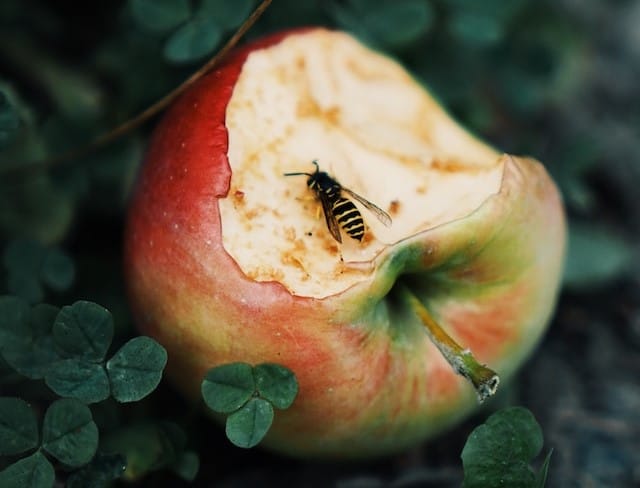
Do Yellow Jackets Make Honey?
When it comes to honey production, the honey bees are the masters. But one couldn’t help but wonder, are these honeybee-looking yellowjacket also good at producing honey?
Honeybees and yellowjackets indeed have similarities, but one key difference between the two insects is that a honeybee produces honey while a yellowjacket does not.
Just like most wasps and hornets, yellowjackets do not produce honey. Still, they benefit the honey-production process as they play a crucial role in controlling pests that can be a nuisance to a honeybee colony.
Additionally, they prey on other insects and clean up dead insects and organic matter, preventing the growth of bacteria that can cause damage to a bee’s hive.
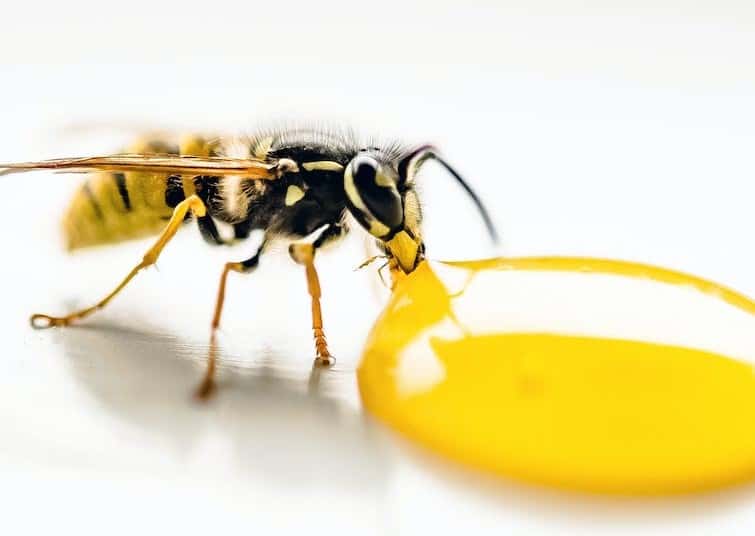
Do Yellowjackets Sting?
Yes, a yellowjacket can sting you and do it multiple times. This is another feature that adds to the list of differences between yellowjackets and honeybees.
Like other wasps, yellowjackets have smooth stingers, while honeybees have barbed stingers. When a honeybee stings, the barbed stinger gets lodged on the skin.
The moment a honeybee pulls out from stinging, the barbed stinger gets dislodged from the bees’ bodies, causing them to die.
On the other hand, yellow jackets have smooth stingers. Once a yellowjacket stings, it can pull out without losing the stinger and can sting multiple times.
This ability makes yellowjackets more of a threat and potentially more dangerous than their distant relatives, the bees.
However, it is worth noting that these yellow wasps do not necessarily seek to sting. Without provocation, they are not inclined to sting.
They are defensive insects that will only sting if they feel threatened or if they perceive a danger to their nest or themselves.
Loud noises, sudden movements, and any disturbance to their nests may be perceived as threats and can provoke these insects to attack and sting.
To avoid getting stung, do not attempt to remove a wasp nest by yourself. Seek the assistance of pest control professionals for their safe removal.
When in the presence of yellowjackets, avoid making abrupt movements and loud noises. Slowly back away until you are from a safe distance from the yellowjacket.
When you need to work around yellow jackets, it is recommended to wear protective clothing. A beekeeping suit would serve the purpose of keeping stings away.

Final Thoughts
Yellowjackets may be a nuisance in your outdoor spaces and picnic areas. Yet, they play an important role in the ecosystem.
While they may not provide us with honey, like their distant bee cousins, yellowjackets contribute to honey production as they sanitize the surroundings by cleaning up the dead matter and preying on some predators that can harm the honeybees.
Remember, they do not actively see human interaction. When they hover over or near humans, their primary focus is to find food to sustain their colonies.
To minimize the chances of encountering these insects, practice storing your garbage properly to avoid attracting them. Additionally, growing some wasp-repelling plants around your home could help keep them at bay.
If you see yellowjackets’ nests inside your home and find the need to remove them, contact a pest control professional to do the job. They are better equipped and more experienced in handling the situation. Do not do it yourself to avoid being stung.
Remember, yellowjackets play a crucial role in the ecosystem. They serve as natural pest controllers by preying on other pests and insects. While most would perceive them as threats, they benefit our environment and the ecosystem in more ways than one.
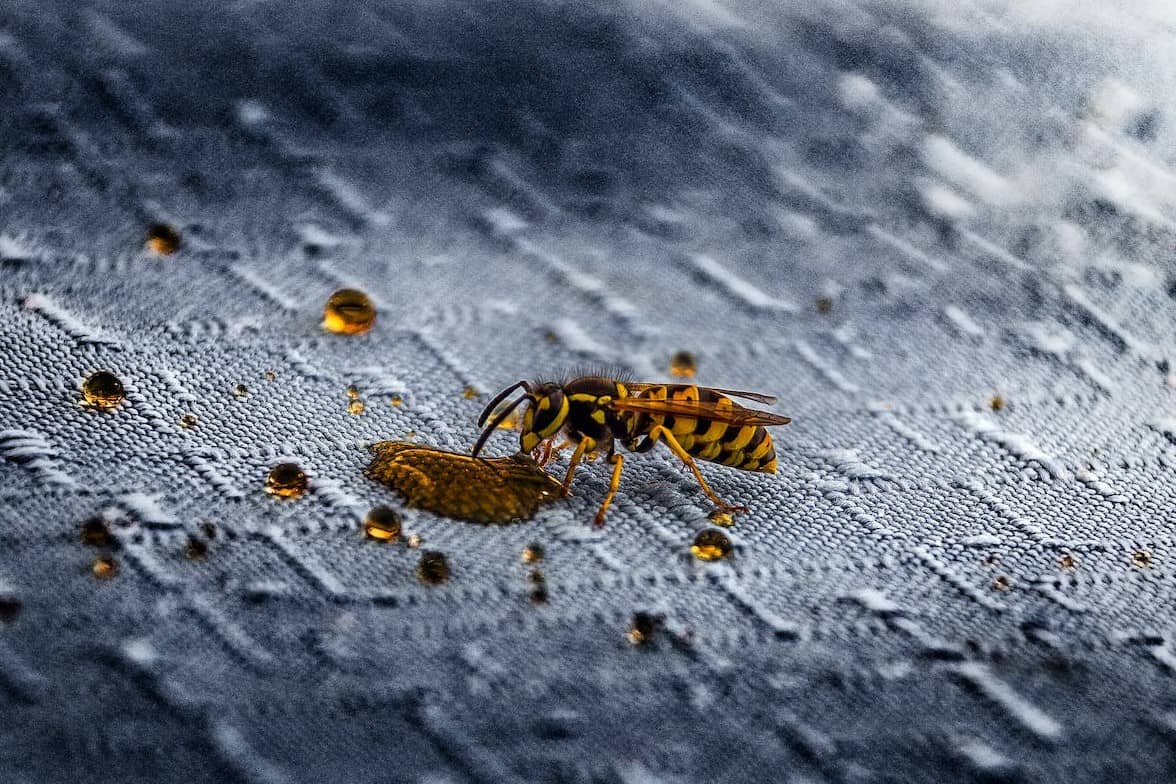
Your yellowjackets are wrong species…. Those here are all dolchivespula. The eyes are long ovale but should be round…. And the butt…..is much too big for yellowjackets.
And a further interesting fact…. While most wasps are enemys of bees, paperwasps do usually ignore bees. So they are mostly no treat.